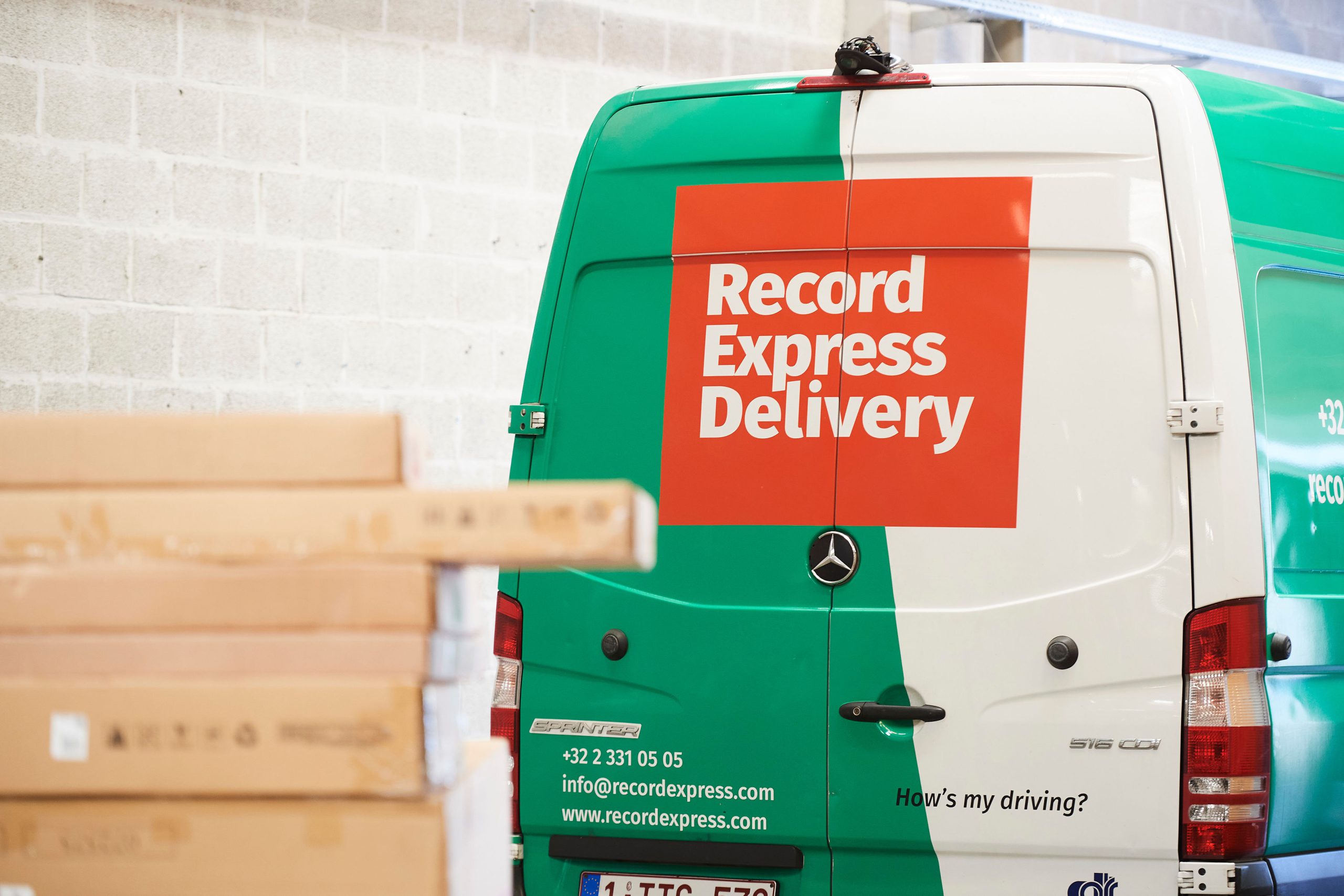Cross-Border Commercial Deliveries: Belgium,s Role in the EU Market
Belgium’s role in EU cross-border freight and logistics. SEND PARCELHome / Our Business Areas / Industry /

Belgium sits at the centre of EU demand with deep-sea ports, dense road/rail, and fast access to France, Germany, Luxembourg, and the Netherlands.
For cross-border commercial deliveries, success depends on: picking the right gateway (port/airport/rail), aligning documents and liability (CMR, Incoterms), managing LEZ rules, and running a tight scan/photo trail across handovers.
Record Express connects linehaul, customs-adjacent flows where relevant, and compliant last mile with KPIs that work across borders.
Why is Belgium a strategic launchpad for cross-border EU deliveries?
Direct answer: Geography, gateways, and density: Belgium’s ports, airports, and road/rail corridors place 80–100 million consumers within a half-day truck radius. That makes it ideal for pan-EU distribution and fast cross-border replenishment.
From a single Belgian hub, shippers can reach northern France, the Randstad in the Netherlands, Luxembourg, and western Germany the same day. Deep-sea and short-sea services connect through major ports, while a dense motorway network and intermodal rail speed inland moves. Combine this with multilingual operations and you get a platform that scales. For commercial freight, the practical edge is time: tight delivery windows for retail, industrial installs, or trade events are easier to keep when your gateway sits near the demand. Belgium’s city LEZ zones and urban constraints also push innovation—micro-hubs, EV vans, and night windows—so you can maintain service quality as rules tighten across the EU.
How do cross-border workflows differ from domestic runs?
Direct answer: More handovers, more documents, wider liability questions, and a higher premium on predictable ETAs. The fix is one plan that unites linehaul, border requirements where applicable, and city-final delivery.
Domestic and cross-border both rely on pick/pack, staging, loading, transport, and ePOD. The difference cross-border is orchestration: slotting ferries or rail, coordinating with partner depots, and aligning documents so handovers are clean. Even inside the EU customs union, you still manage CMR notes, ADR for hazardous goods, and sector-specific rules (pharma, food, high-value). If the route touches non-EU legs (e.g., UK), add customs data and security declarations. Every extra leg adds variance, so scan events and photo proof are your defence against lost time or disputes. A single shared schedule—with contacts, plate numbers, and escalation paths—keeps everyone aligned across borders.
| Aspect | Domestic | Cross-border | Control required |
|---|---|---|---|
| Handoffs | Few | Multiple depots/modes | Scan/photo at each transfer |
| Documents | CMR/ePOD | + security, customs where relevant | Pre-validation and packs |
| ETA risk | Lower | Higher (ports/rail) | Buffer slots + alerts |
| Liability | Straightforward | Varies by leg and contract | Policy/contract mapping |
Which documents and liability frameworks actually matter?
Direct answer: For road freight, CMR governs the carrier’s liability across borders. Incoterms define risk transfer between buyer and seller. Sector rules (ADR, GDP for pharma, HACCP/temperature for food) add layers. Even inside the EU, clear, consistent paperwork accelerates handovers and claims.
Treat documentation as a performance tool, not a chore. CMR notes must match counts and IDs; reservation notes protect rights when damage is visible on delivery. If a refrigerated or high-value shipment moves, attach temperature or serial records to the ePOD. Where ferry or rail legs are used, align security declarations and ensure consolidation manifests are neat. Incoterms shape who insures which leg; make sure your contracts and policies match. Finally, partner depots should adopt the same variance codes (over/short/damaged) so dashboards make sense across borders and claims teams can act quickly if something goes wrong.
| Area | What it covers | Why it matters |
|---|---|---|
| CMR (road) | Carrier liability framework | Defines limits and claim process |
| Incoterms | Risk/obligation split | Clarifies who insures each leg |
| ADR/GDP/sector | Hazardous, pharma, food | Compliance and evidence |
Which Belgian gateways should shippers consider—and when?
Direct answer: Choose gateways by product, lane, and service promise. Deep-sea for global; short-sea for regional replenishment; rail for inland speed; airport for urgent/valuable; road for flexible cross-border delivery to neighbouring markets.
Gateway choice changes total landed cost and reliability. For replenishment into France or the Netherlands, short-sea and road pairs work well. For global imports feeding Benelux and Germany, deep-sea plus intermodal rail into a Belgian hub can be faster than trucking from distant ports. For high-value or urgent consignments, airport linehaul with bonded transfers and secure road legs keeps chain-of-custody tight. The goal is a balanced network: one primary gateway, one overflow option, and contingency space in partner depots if volumes spike or ferries cancel. This is where Belgium shines—multiple high-quality gateways within a compact radius.
| Need | Best gateway | Why | Operational note |
|---|---|---|---|
| Global import to EU | Deep-sea + rail | Capacity + cost | Intermodal into hub |
| Regional EU replenishment | Short-sea + road | Frequency + flexibility | Daily cross-border runs |
| Urgent/high-value | Airport + secure road | Speed + custody | Bonded transfers |
How do city rules (LEZ, noise, permits) affect cross-border final legs?
Direct answer: LEZ policies across Belgian cities restrict older diesel vehicles and push carriers to EV/Euro-6 fleets. Noise windows and parking/occupation permits affect timing. Plan compliant vehicles, book bays, and keep a bilingual comms plan.
Cross-border plans fail if the last kilometre isn’t compliant. Build the city layer into linehaul planning: if your cross-border truck can’t enter the city, route via micro-hubs or suburban depots and shuttle compliant vans. For sensitive areas, use early morning or night windows where allowed. Confirm permits for crane or kerbside deliveries and share plate numbers and driver details a day in advance. Language matters—push ETAs and access instructions in the site’s preferred language (FR/NL/EN) so nothing is lost at the gate. Good city discipline prevents fines, refusals, and missed slots.
What about special cargo—temperature, high-value, or hazardous?
Direct answer: Apply sector standards consistently across borders: GDP for pharma, temperature monitors for cold chain, ADR for hazardous, and sealed custody for high-value equipment with serial capture.
Cross-border legs amplify risk because incidents can happen far from origin or destination. For temperature-controlled flows, use validated packaging and live monitors, and include temperature logs in the ePOD pack. For hazardous goods, confirm ADR training, equipment, and route restrictions ahead of time. For high-value equipment, use sealed custody at each handover and capture serials and photos. Align insurance to the exposure with declared values and appropriate limits. The shared theme is evidence: if you can show compliance and condition across borders, you settle claims faster and protect SLAs.
| Category | Primary risk | Control | Proof |
|---|---|---|---|
| Cold chain | Temperature excursion | Validated packs + monitor | Temp log in ePOD |
| Hazardous (ADR) | Regulatory breach | ADR driver + kit | Docs + checklists |
| High-value | Theft/damage | Sealed custody + secure hubs | Serials + photos |
How do you keep ETAs honest across borders?
Direct answer: Publish plate numbers, use live GPS with geofenced alerts, and hold buffer slots at key handovers. Communicate delays early with a bilingual, single-threaded channel.
Ferries, tunnels, and rail add variability. The best defence is visibility plus buffers: track legs live, alert partners as trucks approach depots, and maintain small elastic windows around critical handovers. A single coordination channel prevents message sprawl; choose phone + SMS or a shared portal and stick to it. For customers, accurate ETAs reduce missed slots and secondary costs such as idle crews or crane time. ETAs should be more than a timestamp; they should include the next step (“Arriving 10:40, unload to bay C, contact Marie/Koen”). This is how cross-border runs feel local at the final leg.
Which KPIs prove a cross-border programme is under control?
Direct answer: On-time to slot, first-attempt success, damage rate, ePOD cycle time, handover dwell time, and CO₂ intensity per delivery. Track by lane and partner.
KPIs create shared accountability among shippers, carriers, and partner depots. On-time to slot and first-attempt success measure reliability; damage rate and ePOD cycle time show quality and documentation discipline; handover dwell time reveals bottlenecks; and CO₂ intensity aligns with EU sustainability goals. Review weekly and adjust buffers, staging, or partner allocations when trends appear. Cross-border operations improve when everyone sees the same numbers and understands the fixes.
| KPI | Target | Why it matters |
|---|---|---|
| On-time to slot | ≥ 97–98% | Protects site labour and crane time |
| First-attempt success | ≥ 95% | Prevents expensive re-runs |
| Damage rate | ≤ 0.5–0.8% | Preserves margin and trust |
| ePOD cycle time | Same day | Enables fast invoicing/claims |
| Handover dwell | ≤ 20–30 mins | Keeps the network flowing |
| CO₂ intensity | YoY reduction | Meets ESG and policy goals |
How does Record Express execute cross-border commercial deliveries?
Direct answer: We combine Belgian gateways and partner depots with compliant urban legs, shared schedules, and photo-verified ePOD—so you get one accountable flow from hub to point of use.
Record Express plans every leg on a single schedule, stages freight by sequence, and keeps vehicles and depots aligned with live tracking. We operate LEZ-ready last legs and integrate with micro-hubs to cut city dwell time. At handovers, we scan, photograph, and capture reservation notes so liability is clear and claims are fast. Bilingual operations and proactive ETAs reduce friction at gates and loading bays. Weekly KPI dashboards (on-time, first-attempt success, damage, dwell, CO₂) give you confidence—and concrete levers when something needs to change. That’s how cross-border stops feeling “far away” and starts behaving like a local, reliable service.
Talk to Record Express about gateway selection, partner depots, and LEZ-compliant final legs across Belgium and the EU.
FAQ
Do you serve France, the Netherlands, Luxembourg, and Germany from Belgium?
Yes. We run daily cross-border lanes and partner depots for fast handovers and reliable ETAs.
Can you support temperature-controlled or high-value cross-border loads?
Yes. We apply validated packaging, live monitors, sealed custody, and declared values aligned with the correct insurance stack.
How do you manage LEZ rules across cities?
We use EV/Euro-6 fleets, micro-hub staging, and route plans that match each city’s entry and timing rules.
Sources & Further Reading
- Record Express — Micro-Hubs in Commercial Freight
- Record Express — Industrial Last-Mile
- Brussels Capital Region — Low Emission Zone

Record Express was awarded a 59/100 score by EcoVadis, the global leader in sustainability ratings.